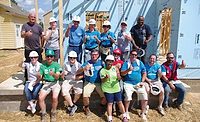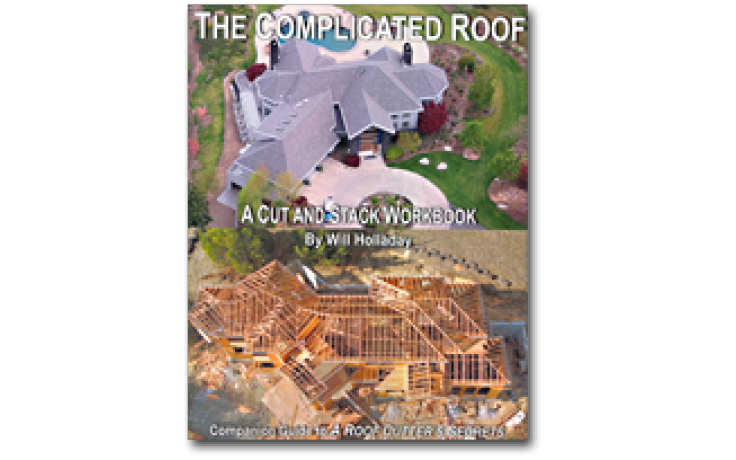This may not be the typical feature you will find in Roofing Contractor, but it is about providing shelter. And the roofing industry is all about furnishing shelter. This is a brief recap of my experience as a volunteer with the 2011 Jimmy and Rosalynn Carter Work Project (CWP).
The adventure began last April with a challenge to show up for a week to build — and make a further commitment to raise funds while advocating for the CWP and the plight of the people of Haiti. Hundreds of individuals answered the challenge, providing labor and raising over $1 million to help fund the project. Corporate and community sponsors provided cash and in-kind donations.
Haiti lies a mere 700 miles south of Miami and continues to recover from the devastating earthquake that rocked the island nation on Jan. 12, 2010. The goal of the CWP was to construct 100 homes in the Santo area of Leogane (pronounced LAY-o-gahn). Leogane, around 18 miles from the Haitian capital of Port-au-Prince, was at the epicenter of the earthquake. An estimated 90 percent of the structures in Leogane were severely damaged or destroyed.
The CWP volunteers were housed near the Santo worksite at an encampment staged by Haven Partnership. Haven is a non-governmental organization (NGO) based in Ireland that has been working in Haiti for years. Staffed mostly by their volunteers, Haven set up tents and provided shower and sanitary facilities while preparing and serving three meals per day for around 700 people. Haven hosted the CWP following a week when they staged their own project constructing the first 50 homes in Santo.
“Out of control” fashioned my first impression of this country, beginning before the plane landed and continuing on the ride to Leogane. The airport in Port-au-Prince was hosting all of one arrival (ours) on a Saturday afternoon and there were no other planes visible on the tarmac. That struck me as odd for a country with a population approaching 10 million.
The bus ride to Leogane provided a view of life on the streets of Port-au-Prince. Signs and street lights were sparse but the drivers and their horns seemed to work things out. There were goats and cows grazing on the side of the road. Not an unusual sight in the countryside, but this was the middle of the city. There was less evidence of the destruction from the earthquake than expected, as most of the rubble has apparently been removed to be recycled.
The Haitian people we saw along the way were, in a word, beautiful. In contrast to these beautiful people were streets made mostly of what seemed like rubble lined with buildings that looked like they were built with rubble. Trash was everywhere. Nearly two years after the earthquake, hundreds of thousands of Haitians continue to live in the tent cities and it seemed like we passed by all of them.
On Sunday, as most of the volunteers for the project were winging their way to Haiti on a pair of Delta jets, the house builders were treated to the first look at the site. The Haven group had erected 55 houses and helped with planning for the hundred we were to build. We spent the day erecting scaffolding around the masonry bases from which we started construction.
The bases included a robust concrete foundation to support a structure designed to resist the forces of an earthquake. The concrete floors were around 2 feet above grade to make them resistant to floods. The build site, consisting of around 54 acres of former sugar-cane field, is located a few short miles from the Caribbean and the topography is mostly flat. Our job was to raise prefabricated walls, build the roof system, cover the roof, install two walls forming the one separate room, and install windows and doors.
The site was laid out in a well-planned grid, unlike most parts of Haiti. While the homes are relatively close to each other they each occupy a nice plot of ground and are constructed so they may be expanded. Two knee walls extend from the rear of the homes, providing an anchor for additional space. In Haiti, as in many parts of the world, homes are built and improved one piece at a time as the owner can afford to buy the materials.
The Build Begins
The serious work began on Monday with teams of seven to nine individuals assigned to work on two homes each. The experience level of the volunteers ran the gamut from highly skilled to handy to unskilled. I was more than a little fortunate to have landed on a team with some very talented and hardworking folks.
Safety was topic A from the very beginning. While these homes were small (approximately 170 square feet) they were relatively tall with roofs pitched at 6/12. The roofing work was not so challenging for professionals but a bit tricky for volunteers. We kept scaffolding up for all work done at height.
With exterior construction of any kind, the weather can have a dramatic impact on how things go. The week of the 2011 CWP was a very blessed week weather-wise. It never rained and most days we had good cloud cover, which made a dramatic difference in the working conditions. The several days when the sun was out in full force it took a toll on the volunteers. It was not deadly, but it did slow things down.
From the masonry bases, prefabricated wall sections were the first to rise. The prefabricated walls were constructed of good ol’ treated Southern Yellow Pine and plywood. The design was rich with fasteners, all installed by hand of course. The frame walls were secured to the masonry with J-bolts and the trusses were secured to the frame with hurricane bracing.
Once the trusses were up we installed purlins to accept the metal roof panels. The purlins were treated two-by-fours and were both nailed and strapped with hurricane braces. The roof covering consisted of a thin layer of flexible foam insulation under a reflective barrier followed by a white-surfaced agricultural metal panel. The metal was fastened by 31/2-inch hot-dipped spiral shank nails through metal and neoprene washers — definitely resistant to the forces of tropical weather.
Our roofing crew (two and sometimes three people) started out tentatively but crew members were moving along like experts by the time they reached the last panels on the second home. Nailing was made easy by pre-drilling the panels and the job was completed with the installation of a galvanized ridge cap.
In addition to the metal roof, each home received gutters with a downspout that would lead to a large plastic barrel to collect rain water. There is no running water or electricity available to this site but there are several solar-powered security lights and hand-pump wells will be placed throughout the area. Each home will receive a sanitary latrine; latrines will be located in clusters adjacent to the homes.
In the interior of these homes, two walls were constructed to make up a separate sleeping room. Each structure received solid wood-paneled doors on the front and back, as well as one for the interior room. Each home also received window coverings. Shutters were made of wood — no glass here.
In spite of the small size, these homes are more than acceptable in the eyes of their new owners. Haitians have long since learned how to endure challenging living conditions, including tight living quarters.
So we made it to the end of the week and 100 homes were brought to a point of completion (or at least a high percentage of completion). All the doors and windows were not in at week’s end, but the exterior walls and roofs were all on. They were “in the dry” and would be soon completed by Haiti’s affiliate of Habitat for Humanity and the homeowners themselves. By making safety a priority (and by downing more than 3,000 bottles of water a day) our group of volunteers made it through the week without a major heat-related incident. For that matter, we made it through the week with only bumps, bruises, minor punctures, and a few stitches.
At the end of this remarkable week I remember being tired, but I will forget that. We struggled to get the framing right and the sun was really hot sometimes and the living conditions were Spartan. I will forget most of that, too. But I will not forget the Haitian people who will live in the homes we worked on or the remarkable team of volunteers I shared the week with in Haiti.
Visit these links to learn more about Haiti and the earthquake, Habitat for Humanity, The Carter Center and the CWP.
Links:
Learn more about Haiti and the earthquake - http://en.wikipedia.org/wiki/2010_Haiti_earthquake
Learn more about the work of Habitat for Humanity – www.habitat.org
Learn more about the CWP – http://www.habitat.org/how/default_jcwp.aspx
Learn more about the work of the Carter Center - http://www.cartercenter.org
http://www.alternet.org/module/printversion/153647
Learn more about relief efforts –
http://www.rollingstone.com/politics/news/how-the-world-failed-haiti-20110804
http://www.rollingstone.com/politics/news/sean-penn-responds-to-rolling-stone-s-haiti-story-20110930















